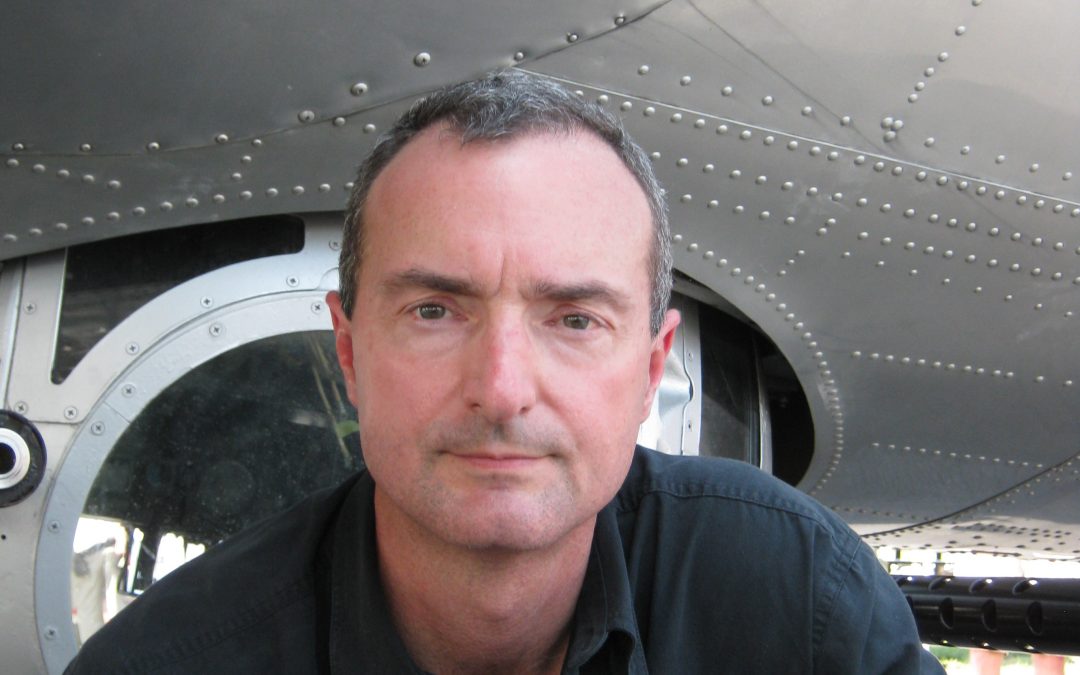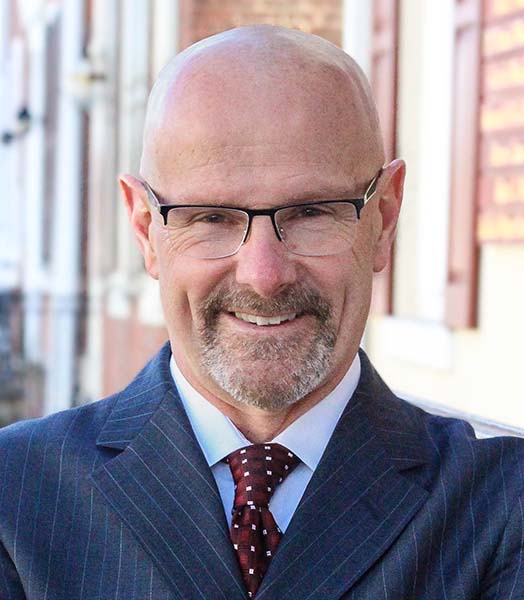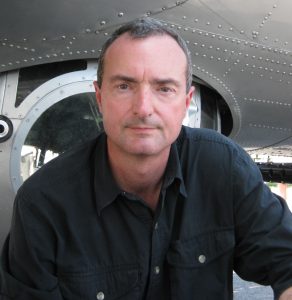 As a decorated aviator who flew on many combat missions over Bosnia and Kosovo, military thriller author Tom Young usually knows his subject matter from first hand experience. But while his seven previous novels are set in the modern day, his new book “Silver Wings, Iron Cross” breaks new ground for him by taking place in the final days of World War II. I sat down with him recently to talk about that book, the challenges of writing historical fiction and the way in which his own experiences in war help inform his novels.
As a decorated aviator who flew on many combat missions over Bosnia and Kosovo, military thriller author Tom Young usually knows his subject matter from first hand experience. But while his seven previous novels are set in the modern day, his new book “Silver Wings, Iron Cross” breaks new ground for him by taking place in the final days of World War II. I sat down with him recently to talk about that book, the challenges of writing historical fiction and the way in which his own experiences in war help inform his novels.
OM: Let’s start with the new book, “Silver Wings, Iron Cross.” Tell me a bit about it.
Young: Until now, all of my novels have been military thrillers set in present day conflicts. But with this one, I have turned to historical fiction set in World War II. Near the end of the war, a downed American pilot and a deserting German officer try to survive together as the Third Reich collapses around them. I have two main characters, one of whom is an executive officer on a German U-boat. The action begins late in the war, and by this time the officer – a man named Wilhelm – has become very disillusioned about the course of the war. He has never been a Nazi, and he decides that when his crew receives orders to carry out what amounts to a suicide mission, he’s not going to carry it out. He is going to desert. These two characters then meet up. I begin with each character in their own world – Carl in his B-17 and Wilhelm in his U-boat.
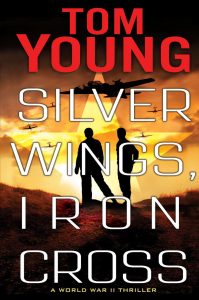 OM: You are a decorated air force veteran. I understand you are also a diver, and that your visit to a sunken German submarine off the NC coast sparked your interest in this story. This is really interesting to me because I doubt most people these days know how active German and Japanese subs were off America’s coasts during the war. Tell me more about that experience and how it moved you toward writing this book.
OM: You are a decorated air force veteran. I understand you are also a diver, and that your visit to a sunken German submarine off the NC coast sparked your interest in this story. This is really interesting to me because I doubt most people these days know how active German and Japanese subs were off America’s coasts during the war. Tell me more about that experience and how it moved you toward writing this book.
Young: The experience of diving on a sunken German U-boat definitely sparked my interest in telling Wilhelm’s side of the story. As you mentioned, most people don’t realize how close naval combat during the war came to mainland American shores. The main shipping lanes came very close to the Outer Banks of North Carolina, and therefore that became a part of the hunting grounds for German U-boats, and over the course of the war they sank thousands of allied freighters and tankers trying to move supplies from North America to Great Britain. When I was in college at the University of North Carolina Chapel Hill, we dived on a of World War II shipwrecks. One of them was the wreck of a German U-boat, the U 352, which was sunk by the U.S. Coast Guard cutter Icarus. It was fascinating, and it got me interested in the history of it. This was back in the 1980s, right when the film Das Boot came out and it just fired up my interest in that aspect of the war.
OM: This is your eighth military novel, but your first to focus on World War II. What was the research process like for you in writing this novel as opposed to your previous books, in which you could lean on your own experiences to guide you? What did you do differently for this one?
Young: For one, I had to pretty extensively research the hardware and the tactics and so forth. A World War II B-17 is quite different from the aircraft that I have flown, and it certainly required a lot of research to learn about the life of a German U-boat crew member. But some things are actually universal – they don’t really change much. I can certainly say that the way a crew bonds and communicates doesn’t change. What it feels like to get shot at doesn’t really change. So, I could fall back on my own feelings in those situations to write the emotions for these characters. But in terms of what they’re doing moment to moment with hardware, that’s what required the most research. And surprisingly, it was easier than you might think, especially with regard to the B-17s. Someone – or more like several someones – has done us writers a great favor by uploading to YouTube all kinds of World War II training films, and those films are terrific. Back then, the War Department put a lot of time and resources into creating great training films. They brought a lot of Hollywood talent to bear, and some of those films are as good as what I saw during my time in the military. The only difference is that mine were in color and these are in black and white.
The resources on YouTube are also not limited to aviation. You can find great training films on everything you can think of. How did paratroopers load their parachutes back then? How did they fire the M-1 Garand? How did radio operators operate those big backpack radios they had? You can find a great training film on just about any question you can ask.
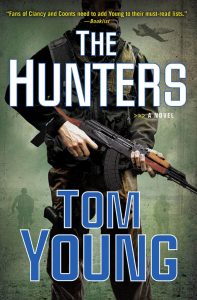 OM: Do you see yourself writing more in this setting?
OM: Do you see yourself writing more in this setting?
Young: At the very least I will write more about World War II. I’m writing another one right now, and I’m also working on proposals for more. I definitely hope to continue more in this genre. The one I’m working on is based on a real event known as Operation Halyard, which was the rescue of more than 500 downed Allied airmen in Yugoslavia. The Office of Strategic Services, the precursor to the CIA, organized a mission to land C-47 Sky Trains at a clandestine airstrip built with hand tools to bring out these downed airmen right from under the noses of the Germans. It was a marvelous rescue operation, and I’m working on a novel based on that.
OM: You were a journalist before entering the Guard. How has that experience helped you in your writing career?
Young: I worked for the broadcast division of the Associated Press. I’ve found that having been a journalist helps, but only up to a point. It certainly taught me how to write a good sentence. It taught me how to meet a deadline. It taught me how to sit myself in the chair and to not get up until I have completed X amount of work. But it did not teach me how to write a novel. It’s a very different type of writing. I discovered I had quite a bit to learn about building a good story. It’s quite a different mindset.
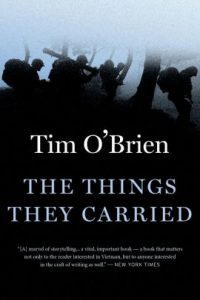 OM: Thrillers have the reputation of being focused more on plot than on characters. Military thrillers in particular can be laser focused on hardware and weaponry and military systems, to the point those things are more of the story than the actual story. But “Silver Wings, Iron Cross” is very character-focused. It is a very human story, which I really like. Is this the general philosophy you bring into your books?
OM: Thrillers have the reputation of being focused more on plot than on characters. Military thrillers in particular can be laser focused on hardware and weaponry and military systems, to the point those things are more of the story than the actual story. But “Silver Wings, Iron Cross” is very character-focused. It is a very human story, which I really like. Is this the general philosophy you bring into your books?
Young: Plot is important, but character is everything. I took a great workshop once from Tim O’Brien, who is best known for his great book “The Things They Carried,” and he had a great line about that – “stuff is not story.” That sort of thing makes for a good background, but that’s all it is. Ultimately, every good story has to be about characters.
OM: I’ve talked with writers who have been in wars, and they often tell me they don’t like to read many military novels because they often are either very unrealistic or in some ways glorify warfare. How much of those kinds of thoughts are in your head when you start to write a novel? Do you think about who will be reading it and how you want to present situations of violence and death?
Young: When I write a violent scene, I do hope to make it somewhat realistic and not gloss over the horrors of war, but I tend not to dwell on that. I will use enough of that to move the story along, enough to make it clear what war is all about, but I like to come back to the characters and their motivations and to spend more of my energy on that sort of thing.
OM: Genre readers usually have set expectation of what they want to see in a story. I had an agent tell me once that if she doesn’t see a dead body in the first five pages of a mystery she stops reading. What are the expectations like from your readers? Do you ever feel bound by those expectations?
Young: I don’t rely on anything formulaic like a dead body in the first five pages. I don’t necessarily do that, but I do fall back on an old principal I think works for any kind of fiction, which is that you start the story as late in the story as possible. Then you get out of the story as early as possible. In “Silver Wings, Iron Cross” I didn’t start the story when Carl enlists in the Air Force or with him at a training base. I started with him about to fly his last mission. That was the latest point at which I could start that story. You can even fall back on the classics. At the start of The Iliad, the Trojan War has been going on for years. In any story, start in the middle of the action when the concept is already established and communicate the conflict to your readers as quickly as possible. If I use a formula at all, it’s to make the conflict clear to the reader as quickly as possible. You have to do it in the first chapter, and ideally you want to do it on the first page. If you really want to move to the head of the class, do it in the first paragraph.
OM: What is your writing process like? Do you have a set daily schedule or word count? And how long does it usually take you from concept to finish on one of your books?
Young: I typically write a novel in one to two years, depending on the deadline and the contract. I still work as an airline pilot, so I tell myself that any day I’m not flying I need to write at least 1,000 words. I start first thing in the morning. I get up, get coffee and go right to the computer and start writing. Some days things flow pretty quickly and I might get to that 1,000 words in two hours. If that happens, I’m done. But if it takes until dinner time to get those thousand words, then I’m going to sit in that chair until dinner time. I find that if you do that you keep writers block at bay. And when I go back and re-read the manuscript and compare the writing I did on the days when things flowed easily with the writing from days when it took all day, it all reads the same. The pages that came slowly are no better or worse than the ones that came quickly. Routine is very important.
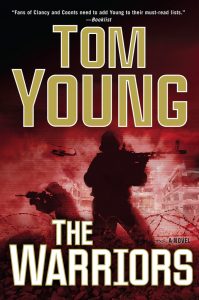 OM: Are you an outliner or do you just go by the seat of the pants?
OM: Are you an outliner or do you just go by the seat of the pants?
Young: I am definitely a seat of the pants writer. I would rather dig a ditch than write and outline. When I start a novel, I have good idea of how I want to begin the story and what the conflict is going to be, and I have a great idea of how I’m going to end the story. I don’t have any idea what happens in the middle. I just the characters talk to me. I let the characters tell me what they want to do and where they want to go, and it seems to work.
OM: The pandemic has thrown a big time wrench into a lot of book releases and tours. How has all this impacted you and the rollout on this book?
Young: It definitely has. I had in-person book signings scheduled, and I was going to have large book launching party at the National Press Club in Washington D.C., and of course all of that got cancelled. I pretty quickly taught myself how to use Zoom and I’ve had some virtual books talks there. I then learned how to make my own videos, and I made a few videos where I talk about the book. I also had a few book trailers professionally done, so I wound up relying a great deal on virtual appearances via Zoom and these videos. It’s definitely been a new world this year.
OM: The publishing industry has undergone a lot of changes over the last few decades. I think every writer will tell you that one of the biggest changes is how much writers are now required to help in marketing their own work, often at their own expense. Has this been your experience too?
Young: Definitely. I definitely have done marketing on my own dime for this book. Not only that, but how one goes about doing your own marketing has also become a moving target because the way readers acquire books is changing. That’s especially true this year because you can’t just walk into a bookstore and pick up a book off the shelf. E-books and audiobooks have become so much more popular. And even the way publishers acquire books and get the books into the hands of readers has changed.
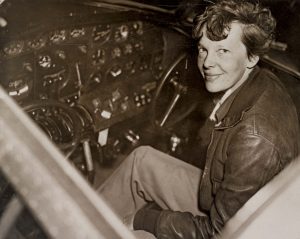 OM: I like to end on what I hope is a fun question. Let’s say I can put you together for a good conversation with one of the following three people: WW I German ace Baron Manfred von Richtofen, legendary Washington Post chief Ben Bradlee, or the equally legendary pilot and adventurer Amelia Earhart. Which one would you choose and why?
OM: I like to end on what I hope is a fun question. Let’s say I can put you together for a good conversation with one of the following three people: WW I German ace Baron Manfred von Richtofen, legendary Washington Post chief Ben Bradlee, or the equally legendary pilot and adventurer Amelia Earhart. Which one would you choose and why?
Young: That’s a very tough choice, but if I had to pick just one it would be Amelia Earhart. And my first question would be, ‘what happened to you?’ Then after that we could talk flying for hours.

